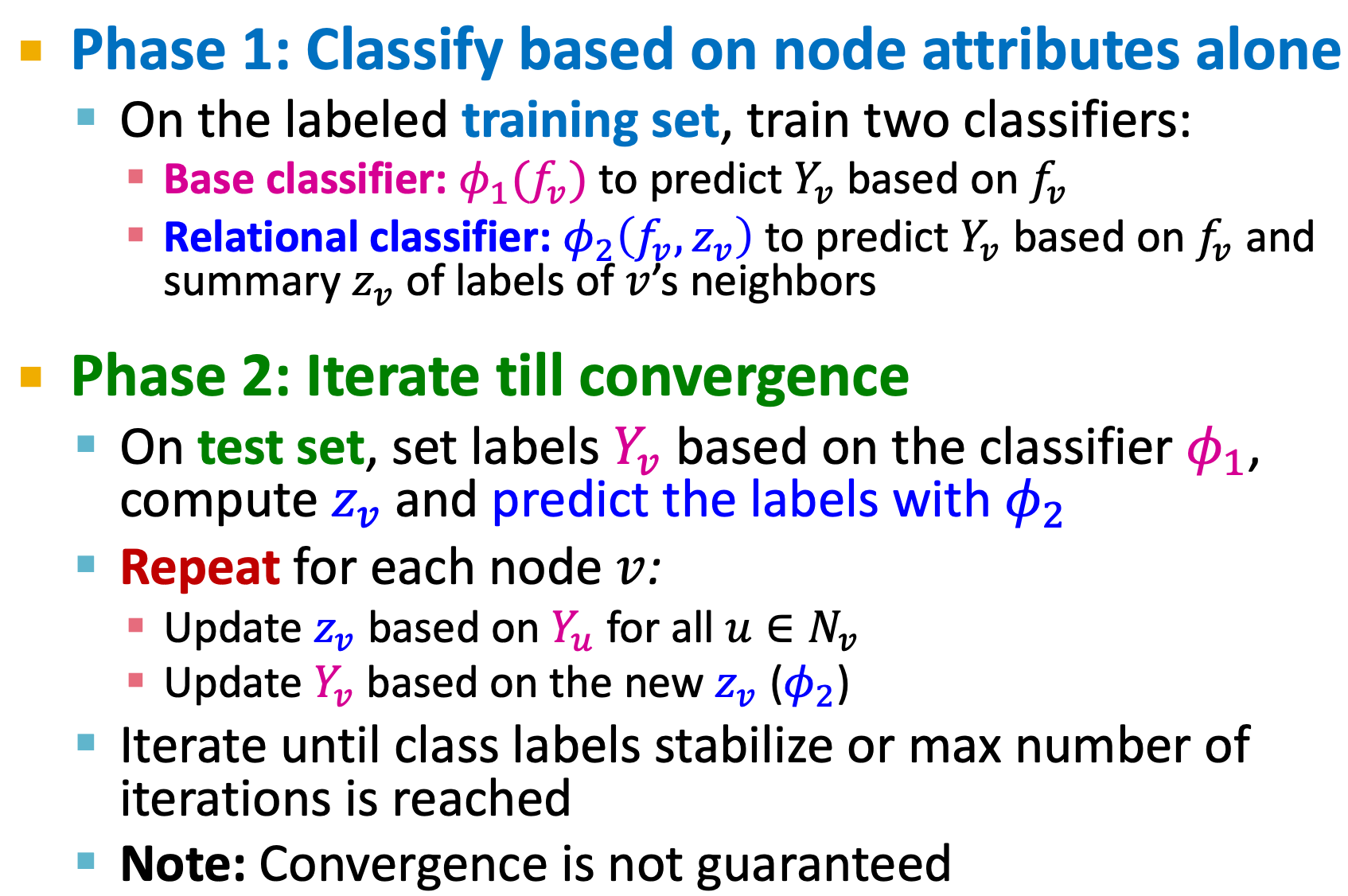ppt
Semi-supervised binary node classification
- goal: 知道部分节点的label求其他节点的label
- main assumption:网络中存在的同质性。同类的node倾向于相互连接,或者聚在一起。
- framework
- approaches
- relational classification
- iterative classification
- correct & smooth
- 以节点二分类为例
Approaches
Probabilistic relational classifier
- 只用到了邻居节点的label来做分类
- step1: 初始化所有unlabeled nodes为0.5
- step2: update所有unlabeled nodes的预测值
- 这里A为邻接矩阵,若边有权重,则Au,v是带权邻接矩阵
- step3: 重复step2直到收敛:达到最大steps,或者所有节点label不再更新
- challenges:
Iterative classification
- Classify node v based on its attributes as well as labels of neighbor set
- : v的neibors的label特征,可以是
- 中每种label的histogram
- 中数量最多的label
- 不同label的数量
- 流程

Collective classification: correct & smooth
- recent state-of-the-art collective classification method
- 一种后处理方法
- 基于的假设:相邻节点的误差应该接近
- correct step
- 初始error: labeled node: error = ground truth minus soft label; unlabeled node: error=0
- 利用扩散矩阵 求取下一步的error
